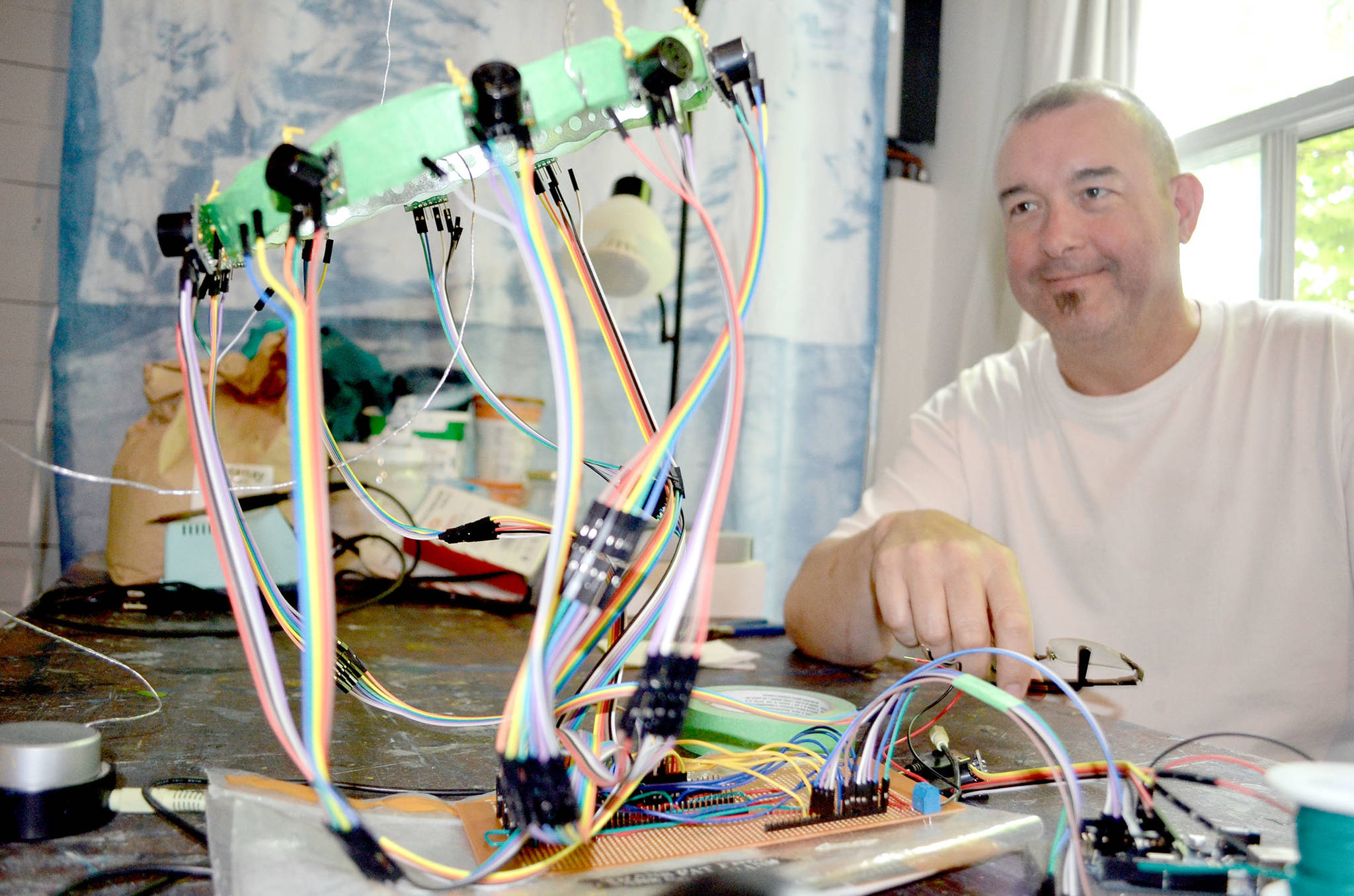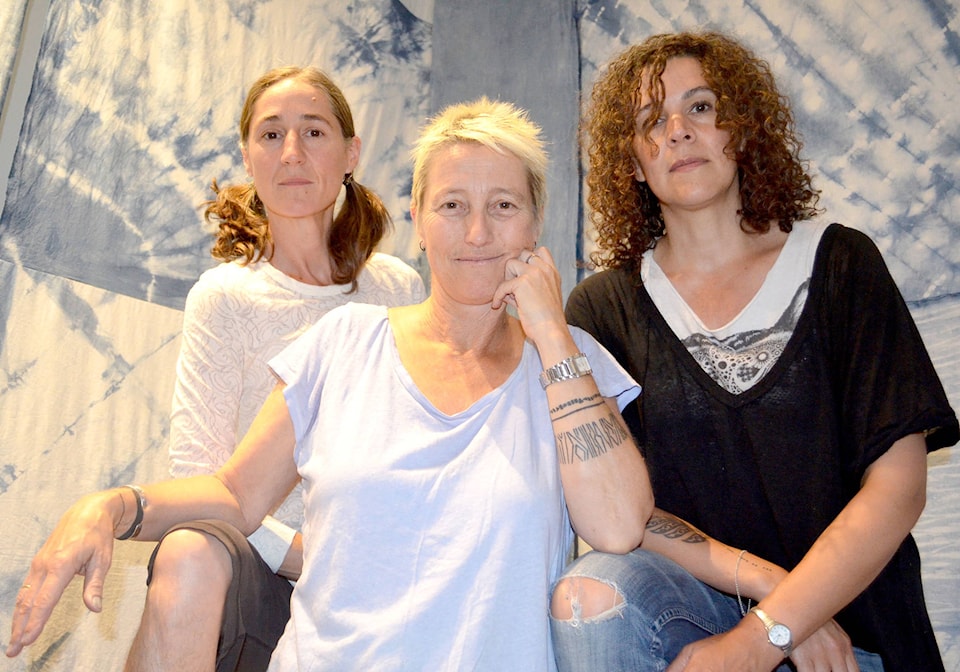If Nelson residents head down to Oxygen Art Centre on Friday evening, they’ll get the chance to interact with an innovative new soundscape project called Summoning in which seven female singers’ voices are triggered by motion sensors and blended together into an constantly evolving composition.
Created by Nicola Harwood, the project started with a foundational composition by local composer Don Macdonald and uses a multitude of 10-to-15 second clips sung in the same key, at the same tempo, so participants can seamlessly transition from listening to Nunavut singer Tanya Tagaq’s throat singing to a Yiddish tune delivered by former cultural ambassador Bessie Wapp and onwards.
There’s never been anything like it in Nelson before.
“I’m calling this a sound temple. I commissioned these seven women to create sung audio with no words, because I didn’t want people listening to words — I want them to be in the sound of these women’s voices,” Harwood told the Star.
And the project won’t be complete until the audience is in the space, triggering the audio with their body movements. What they hear will depend on where they stand, and will change as they move around.
“Interactive media art is certainly a happening thing right now, but it’s a little new to Nelson. I explored it with our last project High Muck a Muck, which started me going down this path. I came from theatre so I like the idea of people having a visceral experience and engaging with their surroundings rather than being passive.”
Power rather than powerlessness
Summoning is aimed squarely at addressing violence against women, an issue Harwood has been creating art about since the 1980s. She’s discouraged to see how little has changed since then. She was especially devastated to learn about the unsolved murders of a multitude of Canadian aboriginal women coast to coast.
“This is an activism healing piece. It’s part of my spiritual practice as well, to do this work. The impulse was to make a piece responding to violence against women, because it’s prevalent worldwide, but we don’t need to create more images of brutality — that’s all we get is images of the brutalized victim,” she said.
She’s not interested in that.
“I wanted people to hear women in their power. I wanted to create something that vibrates with that energy, so it can be a competing narrative about who women are and what we can be.”
On the project’s website, Harwood writes that when 23-year-old physiotherapy student Jyoti Singh Pandey was gang-raped to death on a bus in India, it was one of the events that made it evident to her “that violence against women is global, historical and pervasive.”
“The impulse was confirmed by the shooting of Pakistani schoolgirl Malala Yousafzai and then kidnapping of 200 school girls in Chibok, Nigeria … In this gathering together of female voices, we will express our power rather than our powerlessness, our beauty rather than our pain.”
Bring your own prayer
Once the installation has opened at Oxygen, every woman who has experienced it will be invited to submit their own offering, whether it’s a spoken prayer or a song, and Harwood hopes to include as many languages as possible.
“The prayer can be of your own creation, from your tradition or from a tradition you respect. Women are welcome to be specific if they would like to pray for a woman they know, or know of, or are welcome to offer their prayer to any and all women and girls who have been harmed by violence,” reads the website.
Those prayers will be ultimately be included alongside the content created by the seven primary singers — who were all given specific instructions by the composer.
Peace for those who wish to do harm
Wapp loved the creative process.
“I knew English words weren’t wanted, so I wanted to do something with Yiddish, because that’s my mother’s ancestry and I’ve done a lot of work with that. Then Don gave me a time signature, a beats-per-minute, and five notes I could use. That was really fun, because I love restrictions — it’s so much easier!”
She threw herself into the research process, looking for a “kernel of truth” to build her piece around.
“In the Jewish faith tradition the men were literate and the women were not — and the Jewish faith is all about the word. I knew this, but what I discovered is that there weren’t just men’s prayers, there were also women’s prayers that hadn’t been recorded but were passed down by oral tradition.”
With that tradition in mind, she used Google Translate to come up with a basic sentiment to express: “I summon a prayer that all women be safe, the sisters, the daughters, the mothers, the aunts, the grandmothers — that anyone who wishes to do harm find peace.”
‘I’ve been asked to create something of my very own’
Girvan, meanwhile, was in a unique spot because she’s married to Macdonald. She purposefully distanced herself from him during the creative process.
“Because Don’s a composer, I usually leave that part to him, so I feel eternally grateful to Nicola for giving me this opportunity, because this is really the first time in a professional environment where I’ve been asked to create something of my very own,” she said.
She can’t wait to see how it fits into the larger project, and compared it to a project she does with her youth choir Corazón in which they perform in the Touchstones gallery.
“The idea there was that when people are allowed to move around they can experience the piece in a different way, whereas in a traditional choral setting you can’t do that. This is a very similar idea creatively but takes things a step further.”
Nunavut throat singing in Nelson
The project continues to evolve, even as the installation is about to open. Harwood has been hard at work fine-tuning the motion sensors with her programmer Simon Lysander Overstall while she works on sewing the seams on the dyed fabric used to surround the space.
Getting Tanya Tagaq involved was also huge.
“My friend Brahm Taylor grew up in the north, and he went to high school with her … For the amount of money we could offer her, I didn’t feel good about asking her to create her own piece so I licensed one of her existing ones,” Harwood said.
“It really works perfectly as a strong foundation for the whole installation.”
The other female voices included in the project belong to Andrea Menard, Mutya Macatumpag, Vandana Vishwas and Sandy Scofield. They come from disparate backgrounds, hailing from places such as India and the Philippines. A number of Canadian First Nations are represented.
The project will have an opening reception on Friday at 7 p.m. and then will be open from 1 to 5 p.m. from Wednesday to Saturday until Sept. 30. There will also be an artist talk at 4 p.m. on Saturday.
To learn more visit summoning.ca.

